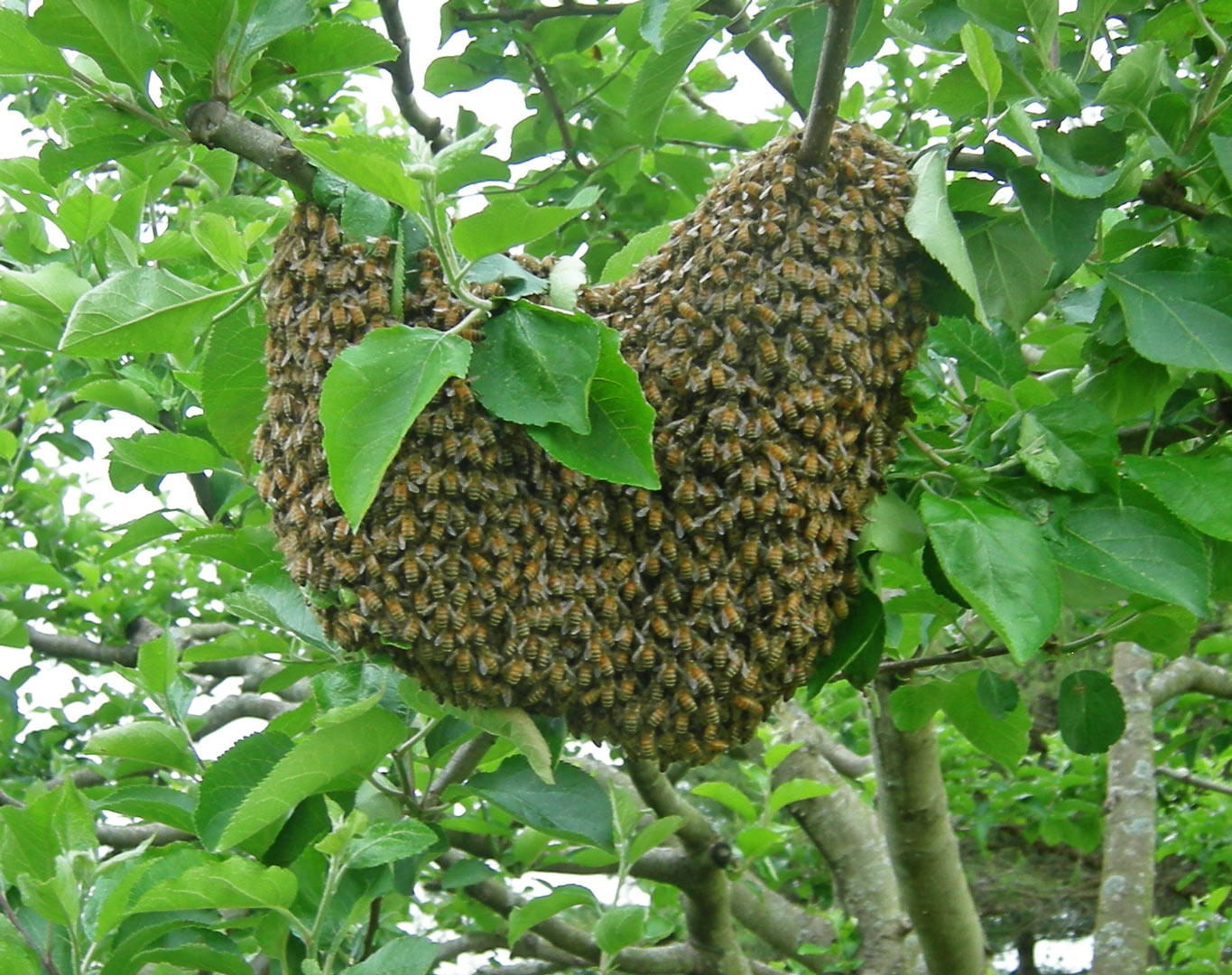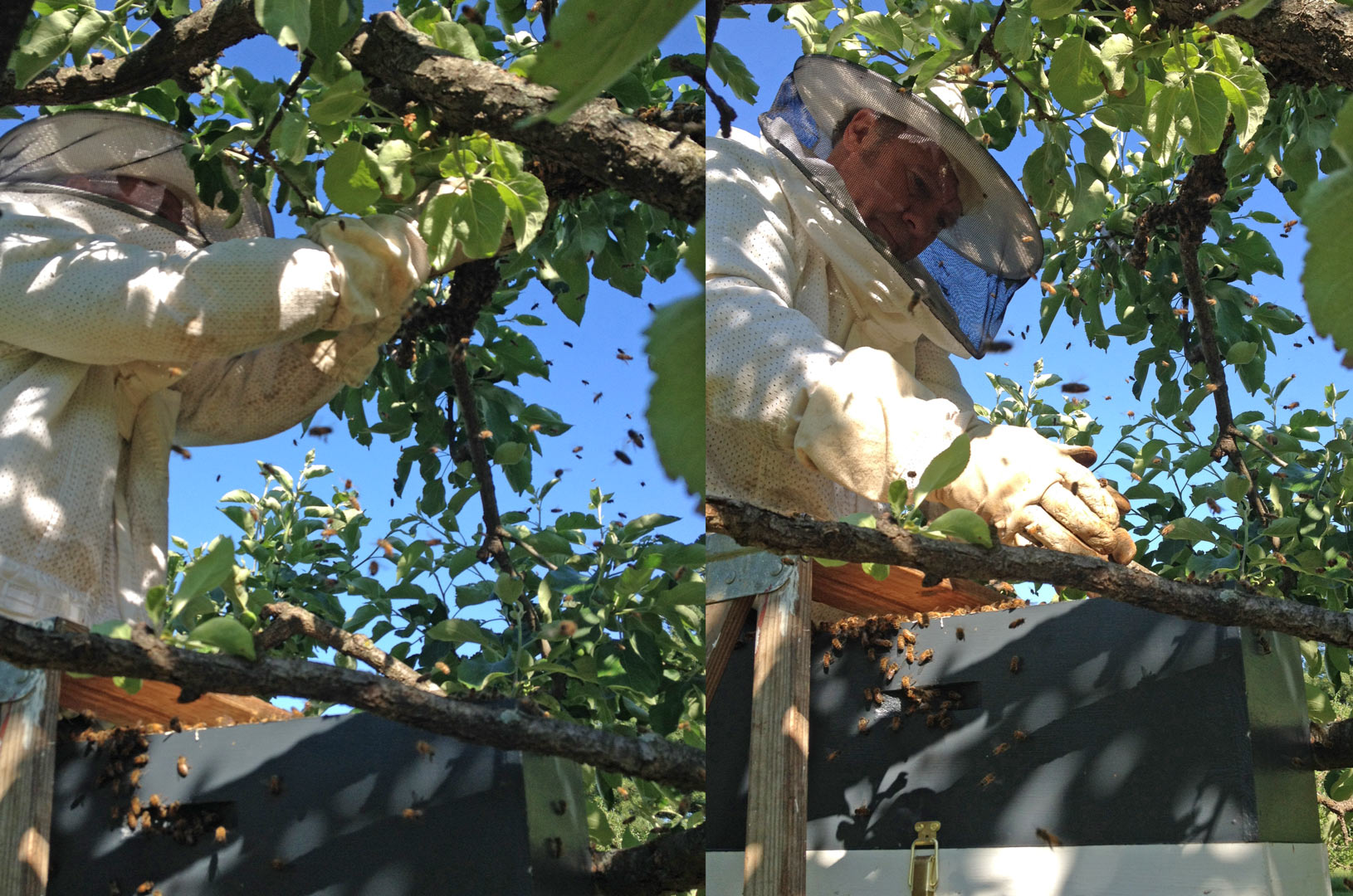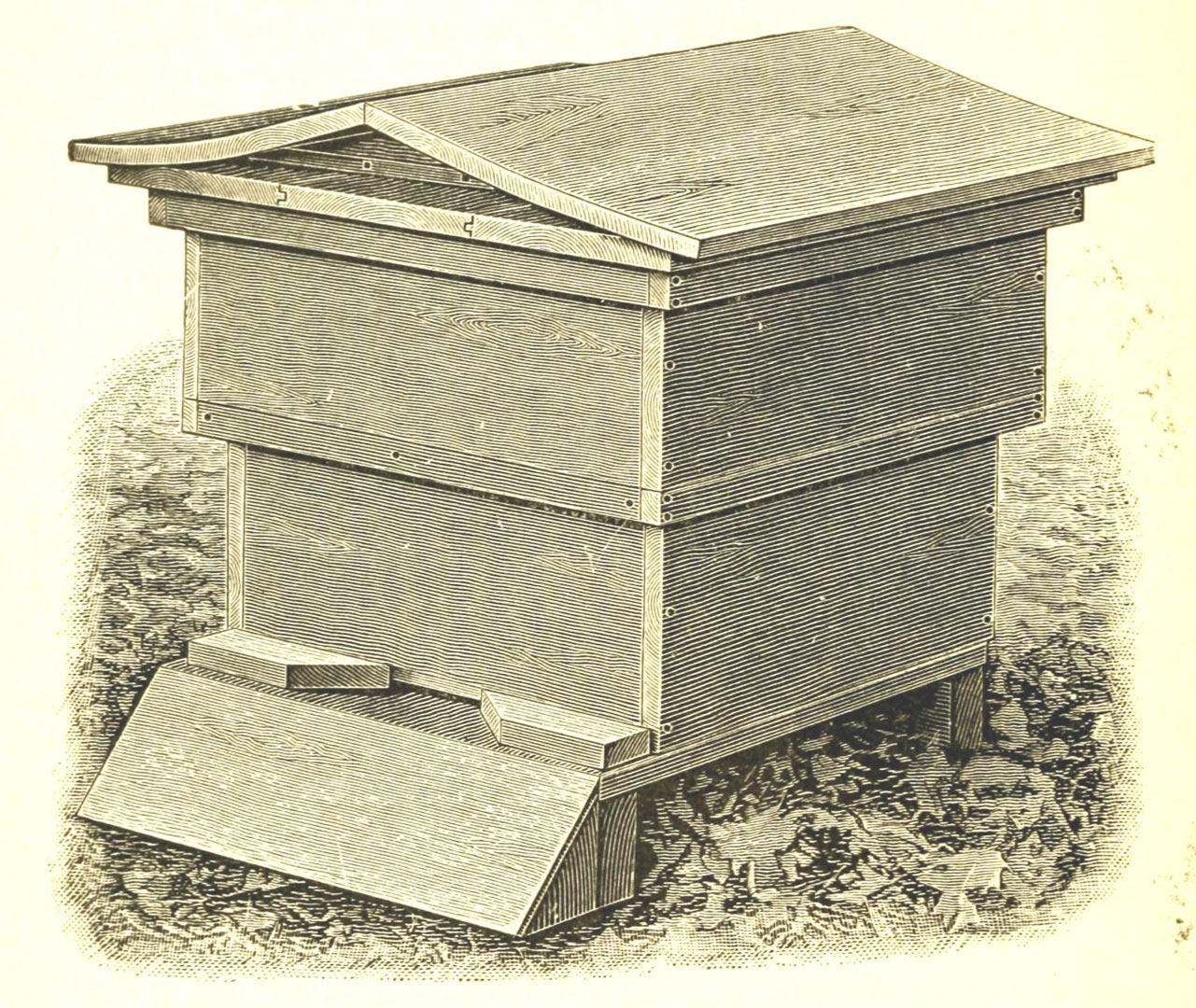
Swarms of honey bees have recently visited the orchard at Slate Run Living Historical Farm. While some people may find this unsettling, it is a sign that the nearby hives are healthy, which is a very good thing. Bees are an integral part of food production. Without them, there would be no apples, peaches, peppers, cucumbers, nor many other fruits and vegetables.
Swarms can occur when there are too many bees for a hive. A second queen bee is created and one of the two queens leaves the hive taking roughly 50 percent of the workers with them. As the queen bee is not a strong flier, it will settle on a nearby branch while scout bees look for a new home.

Bees are quite docile during this transition phase and can be gathered up easily by a beekeeper and relocated. This is what happened with the swarm at the farm. Beekeepers from Scioto Valley Beekeepers, working with farm staff, moved the bees offsite to a new hive. We have 10 hives at the farm, all of them full and productive. If the bees in a swarm are not moved by beekeepers, they will eventually leave on their own once a suitable home has been found by the scout bees.
Although honey bees are not native to the United States, they have been here for a long time. Shipping records show they were brought over in the early 1600s and raised for honey and beeswax. The bees were kept in skeps, which are large upside-down woven baskets. Harvesting honey from a skep was difficult, and the skep had to be disassembled.

In 1852, Rev. L. L. Langstroth, known as the “Father of American Beekeeping,” patented the first movable frame hive. This modular system allowed hives to be inspected, harvested or otherwise managed without destroying the entire hive each time. This design still serves as the pattern for the hives used by today’s beekeepers. In the 1880s, honey bees were raised primarily for the honey. Their role as pollinators was secondary to the money obtained from this liquid gold.
Today it seems that these roles have reversed. With many different types of readily available sweeteners, the role bees play as pollinators has become more important than the honey they provide. Bees are regularly shipped in during the bloom period to pollinate crops, because there are not enough local pollinators to do the job.
Scientists are uncertain about the exact cause of the decline in the bee population but our food supply demands that we work to counter this trend. An easy way to help the bee population is by planting a pollinator garden. While many plants provide pollen and nectar for bees, it is important to have these sources blooming at different times throughout the year to provide a constant source of nutrition.
Some of the plants recommended for bees are zinnias, crabapples and borage. For more information about pollinator gardens, check out The Ohio State University Extension’s Attracting Pollinators to the Garden
Help bees thrive
If you see a honey bee swarm, note its location and contact a local beekeeper. The Central Ohio Beekeepers Association and the Scioto Valley Beekeepers have lists of beekeepers and the areas they cover if you find a swarm outside. The links to those contact numbers are below.
Central Ohio Beekeepers Association
Scioto Valley Beekeepers
DAVE TROTTER
Farm Interpretive Aide
